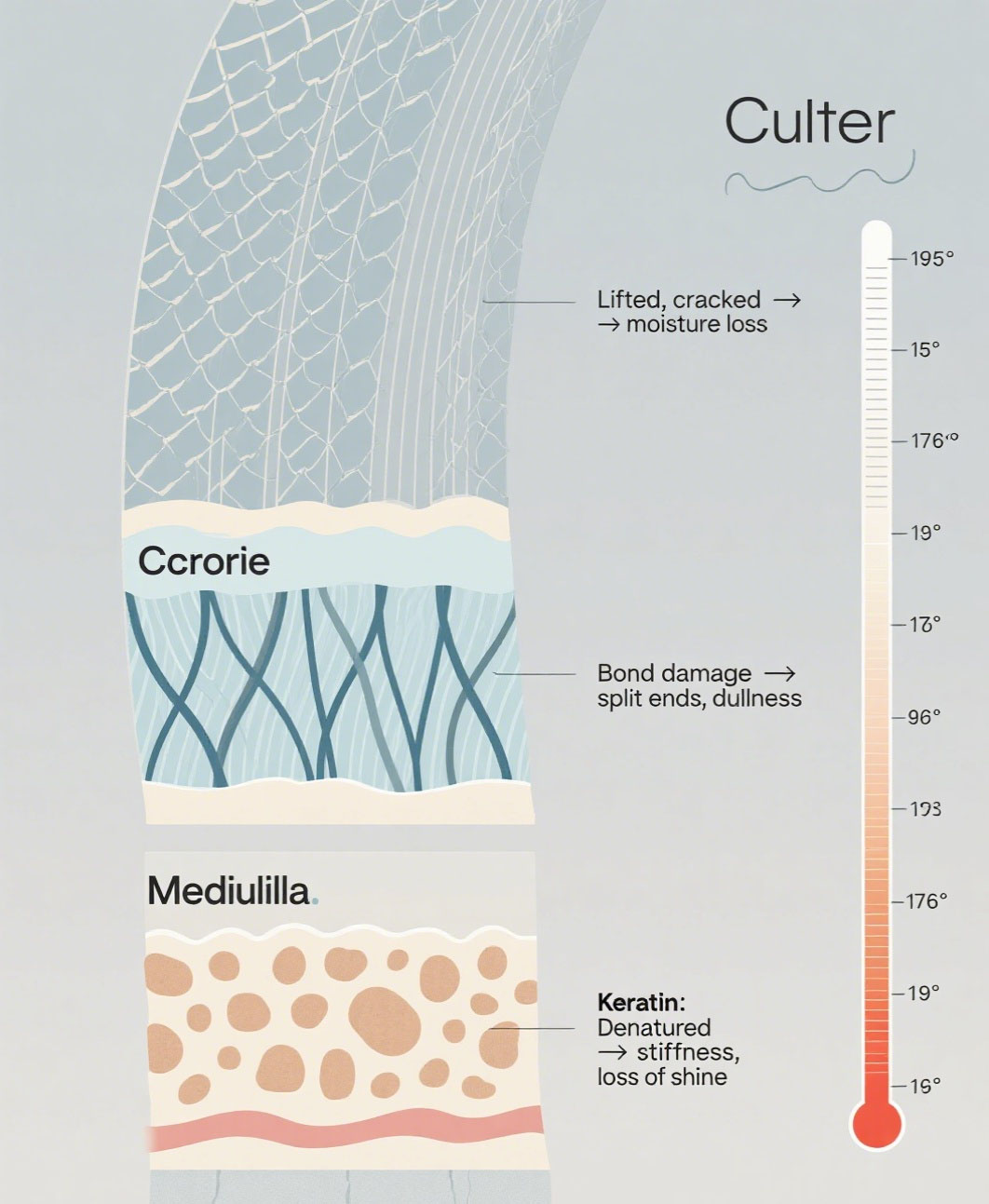Introduction: Blow Drying Isn't As Harmless As You Think
Let’s face it—blow drying is part of modern life. But what if something as routine as drying your hair is silently ruining it? Many people unknowingly use the wrong temperature, distance, or routine, and over time, their hair turns frizzy, brittle, or lifeless. But here's the good news: a few small adjustments, backed by hair science, can make a huge difference.

Section 1: Hot vs. Cold—It’s More Than Just Comfort
Hot air = fast, but harsh. Cold air = gentle, but slow. That’s the oversimplified version. But the truth runs deeper:
- Hot air dries quickly by evaporating water fast—but it also lifts the hair cuticle (outer layer), causing moisture loss, frizz, and fading of dyed hair.
- Cold air helps to seal the cuticle, adding shine and locking in style—but it's less effective at removing deep moisture and can leave hair limp if used too early.
Pro tip: Dry hair 70% with warm/hot air, then finish the last 30% with cold air to set the style and smooth the surface.
Section 2: What Really Happens to Your Hair Under Heat?
To understand heat damage, you need to know hair structure:
- Cuticle (outer layer): Like roof shingles, protecting the hair.
- Cortex (middle): Where strength, color, and flexibility live.
- Medulla (core): Soft center, often absent in fine hair.
What heat does:
- Breaks hydrogen and disulfide bonds inside the cortex. This weakens elasticity and causes breakage over time.
- Damages the cuticle, especially above 176°F (80°C). Tiles lift up, letting moisture escape.
- Dehydrates the strand, leaving it dry, dull, and prone to split ends.
- Denatures proteins like keratin, changing the texture permanently.
In short: High heat without control turns healthy hair into high-maintenance hair.
Section 3: The Right Way to Blow Dry Without Regrets
Blow drying can be part of a healthy hair routine—if done right:
1. Use a smart hair dryer with thermal control
Choose a model like the Labiim LA-05, which adjusts airflow temperature 25 times per second and limits max heat to 176°F. That's hot enough to dry, not damage.
2. Control distance & movement
Hold the dryer at least 6 inches (15cm) from your hair. Move it in a "Z" pattern to avoid overheating one spot.
3. Towel-dry first, always
Use a microfiber towel to absorb excess moisture before blow drying. Never blast dripping hair directly with heat.
4. Finish with a cold shot
It helps close the cuticle, lock in moisture, and make your style last longer.
Section 4: What to Avoid—Common Mistakes
- ❌ Blasting wet roots with max heat
- ❌ Holding the dryer too close or too long in one area
- ❌ Skipping heat protection sprays
- ❌ Ignoring cool shot settings
Each of these damages your hair little by little. Consistency matters more than extremes.
FAQs
Q: Is heat always bad for hair?
Not always—controlled heat under 176°F can safely style hair when combined with protection and short exposure.
Q: Why does my hair feel frizzier after blow drying?
Your cuticle may be raised due to high heat or harsh towel drying. Try lower heat + a cold shot to seal the strands.
Q: Is air drying safer than blow drying?
Not necessarily. Wet hair is more vulnerable. With smart dryers, quick blow drying may be less damaging than leaving hair wet for hours.
Final Thoughts: Heat Isn't the Enemy—Lack of Knowledge Is
You don’t have to ditch your blow dryer—you just need to upgrade how you use it. By understanding how heat interacts with your hair’s natural structure and adjusting your drying habits, you’ll get smoother, stronger hair with far less effort.
If you're ready to protect your hair and still enjoy fast styling, it may be time to switch to a smarter tool like the Labiim LA-05. Your future hair will thank you.
💬 What’s your biggest blow drying mistake you used to make?
Let’s swap stories in the comments.



